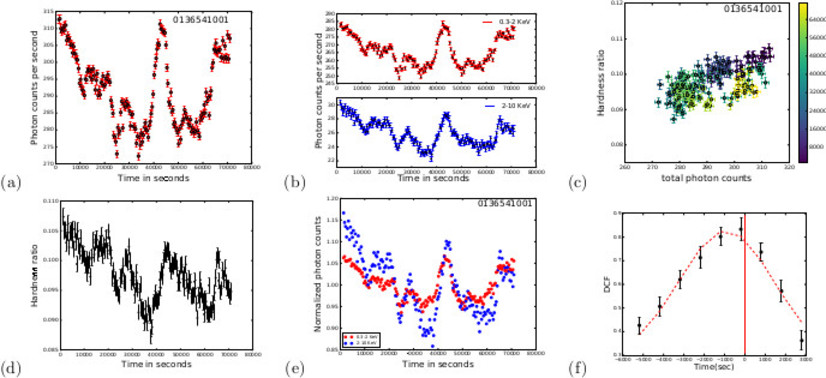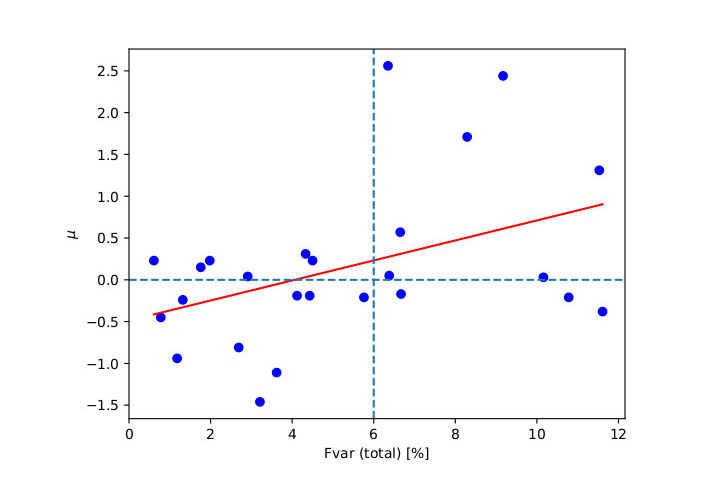Astronomy Object of the Month: 2022, November
< previous Archive next >
A bright and close blazar in X-rays — Markarian 421
Blazars are a subclass of active galactic nuclei with relativistic jet facing the earth. These are variable
in luminosity and spectra. Markarian 421 is a blazar that is highly luminous and variable, a high energy
synchrotron peaked blazar with a featureless non-thermal spectra. It is one of the closest blazar with a redshift
of 0.03 which gives approximately 134 Mpc. It is a highly energetic source which emits in the entire observable
electromagnetic spectrum; the first extragalactic source that was observed to emit in TeV energy range in
1992. The source is variable at very short timescales of minutes to few hours, that is it displays
intraday variability (IDV). The IDV phenomenon is one of the most puzzling one in blazars and yet to be completely
understood. This is speculated to have a relation with the close surrounding of the supermassive black hole.

A group of researchers under the Indo-Polish collaboration between the Jagiellonian University, IFJ-PAN and ARIES, India did a detailed work on the variability of Markarian 421 in X-ray energy range of 0.2 keV to 10.0 keV using the XMM-Newton X-ray data. Markarian 421 is one of the most widely monitored blazar and the group used this to understand the IDV in X-rays using this source. In this work as well, Mrk 421 is used to understand the complex behaviour of a blazar in intraday variability timescales in X-ray energy band.
To understand this better, work was done to analyse the extent of flux variability. Also, the method of hardness ratio was used to under the spectral variability. This method is a model independent method. The correlation between the flux and spectral variability was evaluated. For the hardness ratio, the analysis was done using the energy ranges 0.2-2.0 keV and 2.0-10.0 keV, which are referred to as soft and hard energy band, respectively.
In the large set of observations from XMM-Newton EPIC-pn instrument that have been used for this work, 96% duty cycle was observed but variability up to some extent was observed in all observations. The variability in the hard band was from 1 to 2.5 times higher than the variability in soft band. The minimum variability timescale was found to be diverse from ~1 ks to 10.6 ks. This is not randomly distributed but has a trend over a period of 17 years. This indicates regular changes in physical conditions in the emission processes. From the discrete correlation function analysis, there was not any constant pattern of occurrence of lag in one band over the other. In most cases there was zero lag in the entire observations but from the normalized light curves it could be seen that there was either positive or negative lags occurring around individual flares. Also observations with some amount of lag did not show lag in the normalized light curves during individual observations. Discrete correlation function maybe a good method for testing individual flares, but not the entire observation of highly variable sources like Mrk 421. The hard band showed to be more variable than the soft band, with the common harder when brighter trend in all observations.
Also in the hardness ratio-intensity plots, there were loops forming both clockwise and anti-clockwise with respect to time. The interesting case is of one observation that was taken on December 1, 2002 showed a change in the direction of loop during the flaring state. Although previous works explain it by differing acceleration and cooling timescales, here this is said to be the cause of the complex relativistic magnetic field reconnection regions and the relativistic turbulence inside the jet volume that is modulated by the fluctuating jet density. Also, in the set of observations here, the observations forming clockwise loop displayed positive time lag while the ones with an anti-clockwise loop showed a negative time lag. Another notable feature observed was the dependence of lag on variability. The negative lag was large in low variable observations while positive lag was large in highly variable observations.
Shocks require longer time for acceleration which is not observed in the observations of Mrk 421 so this may not be the plausible explanation for the synchrotron emission in blazars in X-ray energy band. It maybe contributes to the other acceleration and emission processes in the medium, but no signs of it are observed in the medium. Some observations show soft lag which is contrary to the contribution of shocks to the synchrotron emission. The contribution of relativistic magneto-hydrodynamic turbulence appears to be more apt to explain the X-ray emission. The magnetic reconnection may also seem like a good explanation but some symmetry was observed in individual flares because of which this maybe ruled out unless there is a contribution of some external systematic processes. This maybe also that there is contribution of multiple magnetic reconnection processes with each operating on timescales shorter than the flares observed.
To sum up, it is worth considering these intraday variability features as well while modelling the emission processes of blazars. Immense care must be taken for the modelling of blazars because these consider large number of free parameters. All models should be verified with multi wavelength observations.

Original publication: Angel Priyana Noel et al., X-Ray Intraday Variability of the TeV Blazar Markarian 421 with XMM-Newton, The Astrophysical Journal Supplement Series, 262, 1 (2022).
The research was conducted at the Department of High Energy Astrophysics of the Jagiellonian University’s Astronomical Observatory (OA UJ). The work was carried out thanks to the financial support of the National Science Center through grant UMO-2017/26/D/ST9/01178.
|
Angel Priyana Noel Astronomical Observatory Jagiellonian University A.Noel [@] oa.uj.edu.pl |


